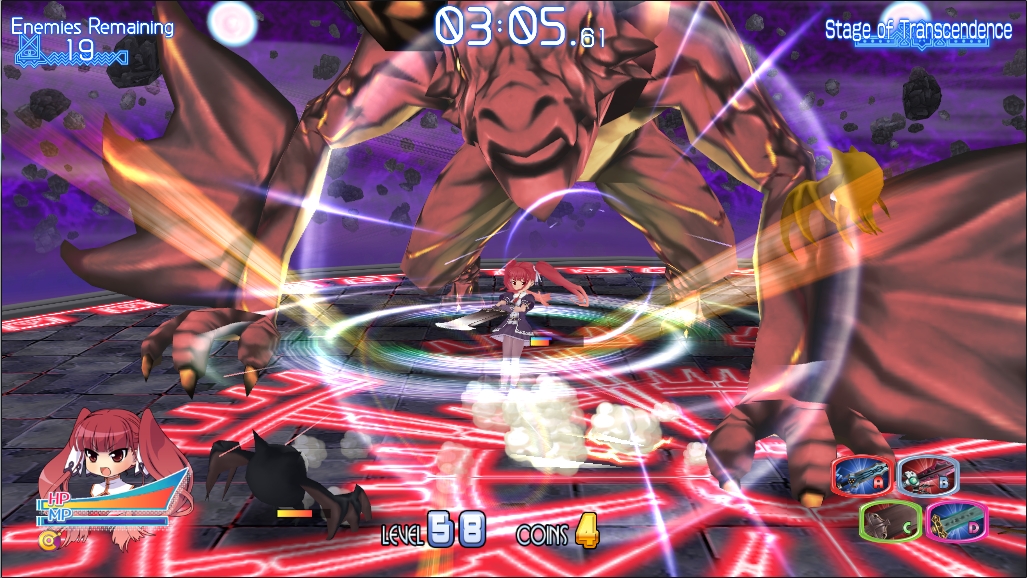 Many of the finest games focus on two aspects of their design; scoring and entertaining mechanics.
Many of the finest games focus on two aspects of their design; scoring and entertaining mechanics.
Scoring is beautifully pure; doing certain actions rewards the player with points that increase a score. This score is most often either used to gauge the skill of a player or used to give the player a currency of some kind. In terms of mechanics, they’re typically at their most entertaining when they encourage the player to sharpen their skills and consequently make the players push those mechanics further and further towards their extreme uses. So for example the bunny hopping meta-mechanic that we find in many FPS games was founded because those early first-person shooter games encouraged the players to exploit the mechanics of the game.
Croixleur has three game modes; a story mode, a time-attack mode, and an endless mode. The time-attack and endless modes are fairly easy to explain; time-attack mode asks the player to rack up as many points as they can in a certain time limit and the endless mode asks the player to survive the longest time while tackling infinitely spawning enemies that progressively get harder.
Story mode is where actions are a bit more varied. After receiving a brief set-up, the player is given 15 minutes and tasked with traversing through a dozen arenas filled with different groups and variations of enemies. After completing certain arenas the player can choose one of two different arenas to proceed through. While these arenas do not branch the following series of arenas or alter the sliver of story, they each separately award the player with different special moves that can be used in subsequent playthroughs.
 However, the failings of the scoring system are mostly made up for in Croixleur’s very entertaining mechanics. The player is given three methods of attacking; a weak universal attack which can result in a three-hit combo, a strong spinning attack which makes the player invincible, and a selection of four special attacks which are determined by what weapons are in the alternate functions of the four face buttons.
However, the failings of the scoring system are mostly made up for in Croixleur’s very entertaining mechanics. The player is given three methods of attacking; a weak universal attack which can result in a three-hit combo, a strong spinning attack which makes the player invincible, and a selection of four special attacks which are determined by what weapons are in the alternate functions of the four face buttons.
Weapons can be found by playing through the story mode and each weapon is tied to its own special move, giving a nice bit of incentive to play through the story mode more than once. The control set-up is great, assuming that the player is using gamepad with four face buttons (I highly recommend it), and the player has immediate access to the universal attack, jump, dash, and spinning attack buttons. However, by pressing another button, those four face buttons then become the special attacks designated to the weapons which the player has equipped. This control scheme allows for high versatility with minimal fuss, which complements the dashing mechanics and attack transitions. Using the mechanics efficiently, one can dash and attacks enemies in a non-stop fashion. While the mechanics could use some more tweaking to make the combat experience even more fluid, what is already created does feel exciting to play with.
The visuals and audio could be a mixed bag for some. As the screenshots in this review warn you, this is not fantastic-looking game. However, nothing in the game actually got in the way of playing it. Besides the main combat music, nothing in this game will make you rush out to buy the soundtrack, with coins sounding like coins and hits sounding like hits. Croixleur is also not a resource-heavy game, with myself being able to achieve a steady 60 frames-per-second on a mobile graphics card (specifically a Radon HD 7640G).
– V8Ninja









